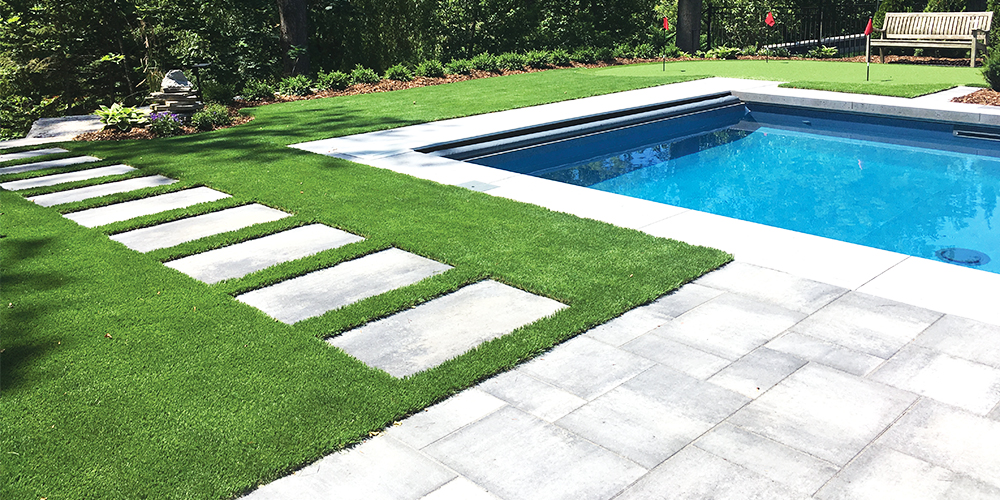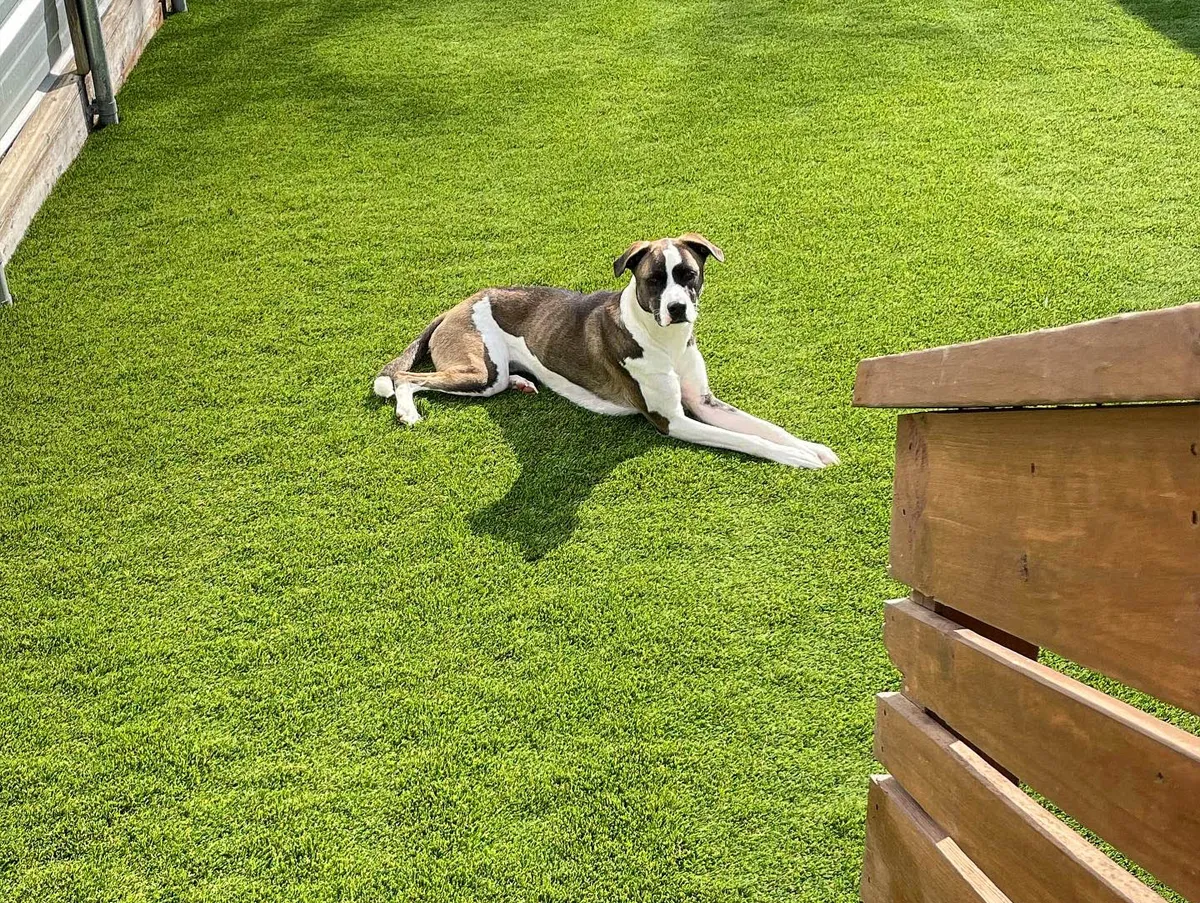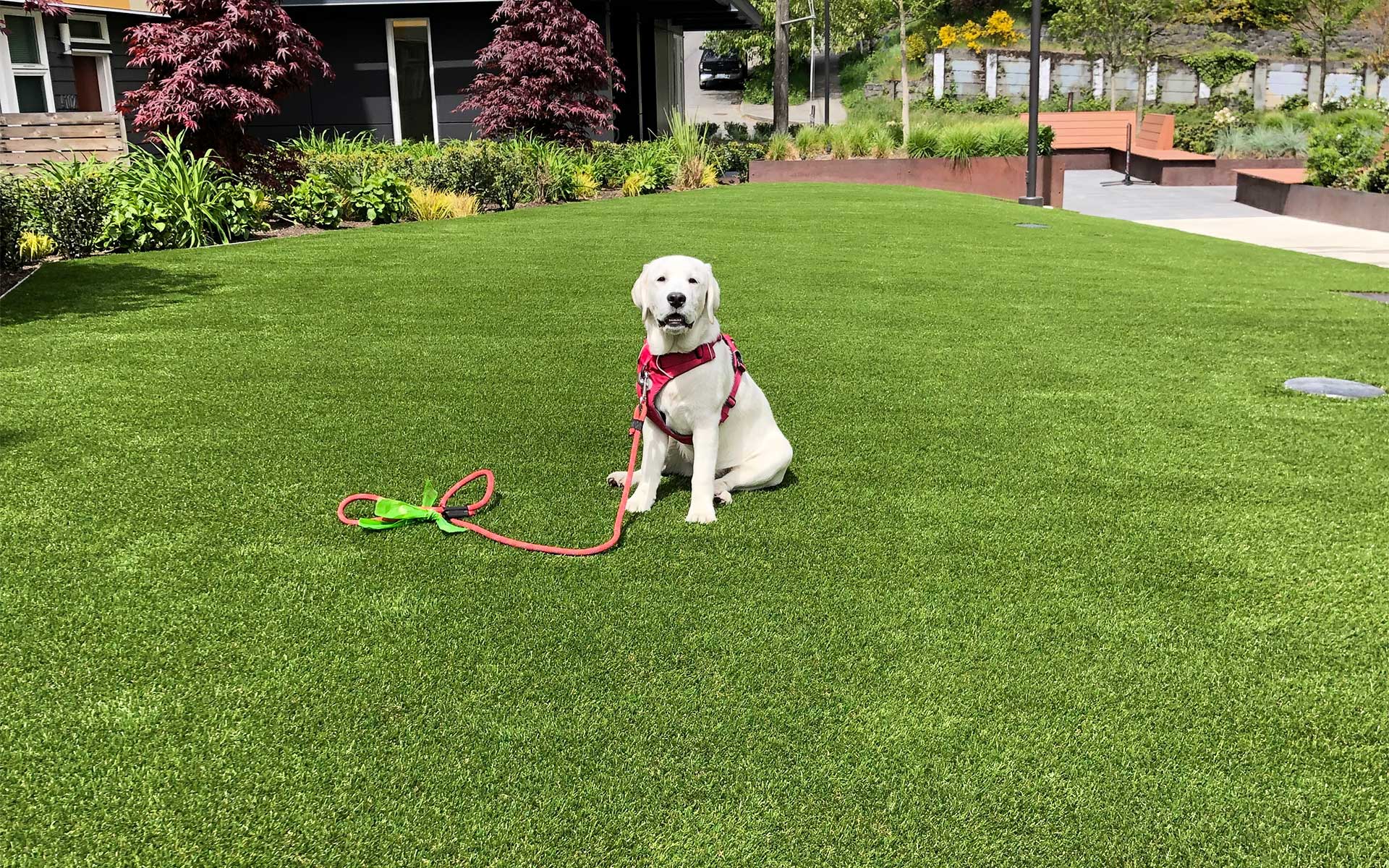Custom Turf Installation Phoenix AZ for Homes, Businesses, and Play Areas
Custom Turf Installation Phoenix AZ for Homes, Businesses, and Play Areas
Blog Article
Look Into the Environmental Benefits of Opting for Artificial Turf Solutions
The adoption of fabricated turf remedies presents an engaging possibility to address pushing environmental difficulties. By dramatically minimizing water use and minimizing the application of dangerous chemicals, these options not just promote lasting landscape design yet also safeguard regional ecological communities.
Water Conservation Benefits
Among one of the most substantial benefits of fabricated turf is its ability to preserve water. Traditional lawn yards need substantial irrigation, particularly in areas vulnerable to drought or water restrictions. On the other hand, man-made grass does not need watering, considerably lowering the overall demand for water sources. This attribute is especially advantageous in deserts where water shortage is a pushing problem.
By eliminating the demand for regular watering, fabricated grass adds to sustainable landscape techniques and aids mitigate the environmental influence of extreme water consumption. The conservation of water prolongs to the reduction of drainage, which can lead to dirt disintegration and river air pollution.
Additionally, the installation of man-made lawn allows house owners and municipalities to allot water sources extra effectively, concentrating on crucial uses such as drinking water and agriculture. The shift towards synthetic grass not just advertises liable water usage however additionally straightens with broader environmental goals intended at maintaining all-natural sources.
As neighborhoods progressively prioritize sustainability, the water conservation benefits of synthetic grass offer an engaging situation for its adoption in property and commercial landscape design tasks.
Decreased Chemical Use
The change to fabricated grass considerably lowers the dependence on chemical therapies commonly utilized in all-natural turf upkeep. Traditional grass management commonly involves the application of fertilizers, herbicides, and pesticides to promote growth and control parasites. These chemicals can position dangers to human health, neighborhood wildlife, and the setting, adding to dirt and water contamination.
In comparison, man-made lawn eliminates the need for these damaging compounds. Once mounted, it calls for marginal upkeep, primarily containing regular cleansing and infrequent infill replenishment. This reduction in chemical use not just benefits the instant setting but additionally contributes to wider ecological security. By reducing the launch of synthetic compounds right into the community, synthetic turf promotes healthier dirt and water systems.
Furthermore, the absence of chemical overflow connected with man-made grass installments assists secure local waterways from pollution, sustaining marine life and maintaining biodiversity. Arizona artificial turf. As communities progressively focus on sustainable techniques, selecting synthetic grass offers a viable solution that straightens with ecological preservation objectives. Via this change, property owners can delight in lush green areas without endangering eco-friendly health and wellness, leading the way for a much more lasting future
Lower Carbon Footprint

Additionally, the setup of synthetic grass can result in considerable water preservation. All-natural lawns require considerable quantities of water for irrigation, which not only includes in the carbon footprint related to water removal and therapy yet additionally pressures neighborhood water sources. In contrast, synthetic lawn requires minimal upkeep, needing no watering, thereby considerably decreasing water use and its associated power prices.
In addition, the longevity of synthetic grass adds to its reduced carbon effect. With a life-span of as much as 15 years or even more, the need for frequent substitutes is reduced, leading to less waste and reduced power usage in production and taking care of conventional lawn alternatives. In general, synthetic grass presents a lasting choice for environmentally aware landscape design.
Habitat Conservation
Habitat conservation is a crucial consideration in the dispute over landscape design options, you could try here particularly when comparing synthetic grass to all-natural yard. All-natural yard yards often require considerable upkeep, including using chemicals, herbicides, and plant foods, which can detrimentally affect neighborhood ecological communities. These chemicals can leach right into the soil and waterways, damaging indigenous vegetation and fauna and interrupting regional environments.
Artificial grass removes the requirement for hazardous chemicals, consequently safeguarding nearby wildlife and maintaining the integrity of surrounding ecological communities. The installation of fabricated grass can lead to the conversion of previous lawn locations right into even more biodiverse landscapes, such as pollinator yards or indigenous plant areas, which can sustain local wildlife.
Eventually, the shift to man-made lawn not just preserves water and lowers upkeep efforts but also promotes an extra unified connection between human tasks and the native environment, promoting environment preservation at the same time.
Long-Term Sustainability
Long-term sustainability is a crucial factor in evaluating the benefits of synthetic grass over typical yard yards. Among one of the most substantial advantages of synthetic turf is its toughness; it can last approximately 15-20 years with marginal upkeep, whereas natural grass requires frequent reseeding and substitute. This durability minimizes the demand for constant resources, such as water, fertilizers, and pesticides, which are necessary for maintaining a healthy yard lawn.
In addition, fabricated grass adds to a reduction in carbon exhausts connected with grass treatment equipment. Traditional grass frequently require gas-powered mowers, trimmers, and blowers, all of which add to air contamination. Turf installation phoenix az. On the other hand, artificial grass removes the need for such tools, promoting a cleaner setting
Moreover, the production of artificial grass progressively utilizes recycled products, boosting its see here now sustainability account. As makers embrace eco-friendly techniques, the ecological impact of synthetic grass proceeds to diminish.

Verdict
The adoption of artificial grass solutions presents substantial ecological advantages, consisting of significant water conservation, reduced dependence on unsafe chemicals, and a reduced carbon footprint. Man-made grass help in preserving all-natural environments by reducing land disruption and advertising long-lasting sustainability with the use of durable products. Jointly, these factors underscore the potential of synthetic grass to add favorably to environmental wellness and supply a feasible alternative to conventional landscaping techniques in a significantly resource-conscious globe.
In comparison, fabricated lawn does not need watering, substantially decreasing the total demand for water sources. By decreasing the launch of synthetic substances into the environment, man-made turf advertises Click Here much healthier soil and water systems.
Additionally, the setup of man-made grass can result in substantial water conservation. In comparison, man-made turf requires minimal maintenance, requiring no watering, consequently considerably lowering water usage and its associated power prices.

Report this page